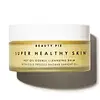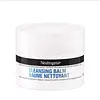What's inside
What's inside
 Key Ingredients
Key Ingredients

 Benefits
Benefits

No benefits
 Concerns
Concerns

 Ingredients Side-by-side
Ingredients Side-by-side

Propanediol
SolventGlycerin
HumectantEthylhexyl Palmitate
EmollientPolyglyceryl-10 Laurate
Skin ConditioningPolyglyceryl-10 Behenate/Eicosadioate
EmulsifyingPPG-9 Diglyceryl Ether
Skin ConditioningGlyceryl Stearate Se
EmulsifyingGlyceryl Behenate/Eicosadioate
EmollientBeeswax
Emulsion StabilisingPhenoxyethanol
PreservativeAdansonia Digitata Seed Oil
EmollientButylene Glycol
HumectantOryza Sativa Bran Oil
EmollientGlucosylrutin
AntioxidantWater
Skin ConditioningLithospermum Erythrorhizon Root Extract
Skin ConditioningAloe Barbadensis Leaf Extract
EmollientPropanediol, Glycerin, Ethylhexyl Palmitate, Polyglyceryl-10 Laurate, Polyglyceryl-10 Behenate/Eicosadioate, PPG-9 Diglyceryl Ether, Glyceryl Stearate Se, Glyceryl Behenate/Eicosadioate, Beeswax, Phenoxyethanol, Adansonia Digitata Seed Oil, Butylene Glycol, Oryza Sativa Bran Oil, Glucosylrutin, Water, Lithospermum Erythrorhizon Root Extract, Aloe Barbadensis Leaf Extract
Alternatives
Ingredients Explained
These ingredients are found in both products.
Ingredients higher up in an ingredient list are typically present in a larger amount.
Beeswax is natural wax produced by honey bees and can be synthetically created. It consists mainly of fatty acid esters and long-chain alcohols.
In cosmetics, beeswax is a emollient. Due to its waxy structure, it creates a protective barrier. This barrier prevents water from evaporating off the skin.
This may not be a good ingredient for oily skin. We recommend speaking with a professional if you have concerns.
Beeswax cannot be removed with water, but can be taken off with an oil cleanser.
Beeswax is also antiseptic and contains vitamin A.
Learn more about Beeswax